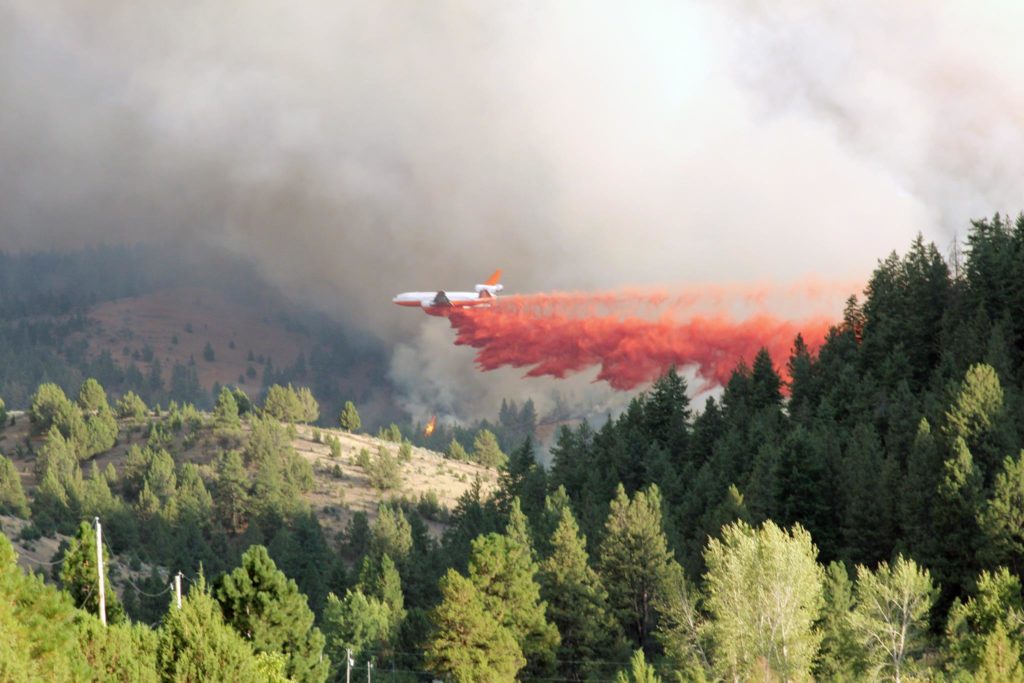
JOHN DAY, Ore. – Highway 395 from John Day (population 1,744) winds through the community of Canyon City and up into the path of the Canyon Creek Complex fire.
Fanned by gale-force winds, tinder-dry fuel and extreme temperatures, flames roared down this narrow canyon on Aug. 14, 2015, destroying 43 homes and nearly 100 barns and outbuildings, devastating the communities of Canyon City and John Day.
The fire charred 110,000 acres before being contained in early November. The most destructive fire in Oregon’s history cost $31.4 million to suppress.
Today, signs of recovery and rebuilding are visible. Several homeowners in the fire’s path have rebuilt, new foundations sprouting amid stands of blackened trees. Residents are moving on with their lives.

New momentum
As residents rebuild, the push to restore resilience to the surrounding 1.7 million-acre Malheur National Forest has gained momentum.
The ability to withstand fire and other natural disasters is accomplished by removing small trees and brush, leaving behind the larger, more fire-resistant trees.
It’s an additional expense in the short term, but improves forest productivity and reduces fire protection costs in the long term.
So how do communities pay for the work? In John Day, two new businesses are installing equipment to process small-diameter trees into commercial products.
Malheur Lumber Company is shoehorning a small, refurbished, small-diameter mill into the ground floor of their existing sawmill. With the new mill, they’ll be able to efficiently process smaller pine and juniper logs into boards — a capacity they previously lacked.
Similarly, Iron Triangle Logging — the company awarded the 10-year stewardship contract from the Malheur National Forest — is developing a commercial firewood operation and post and pole plant to process thousands of tons of small logs removed from the Malheur.
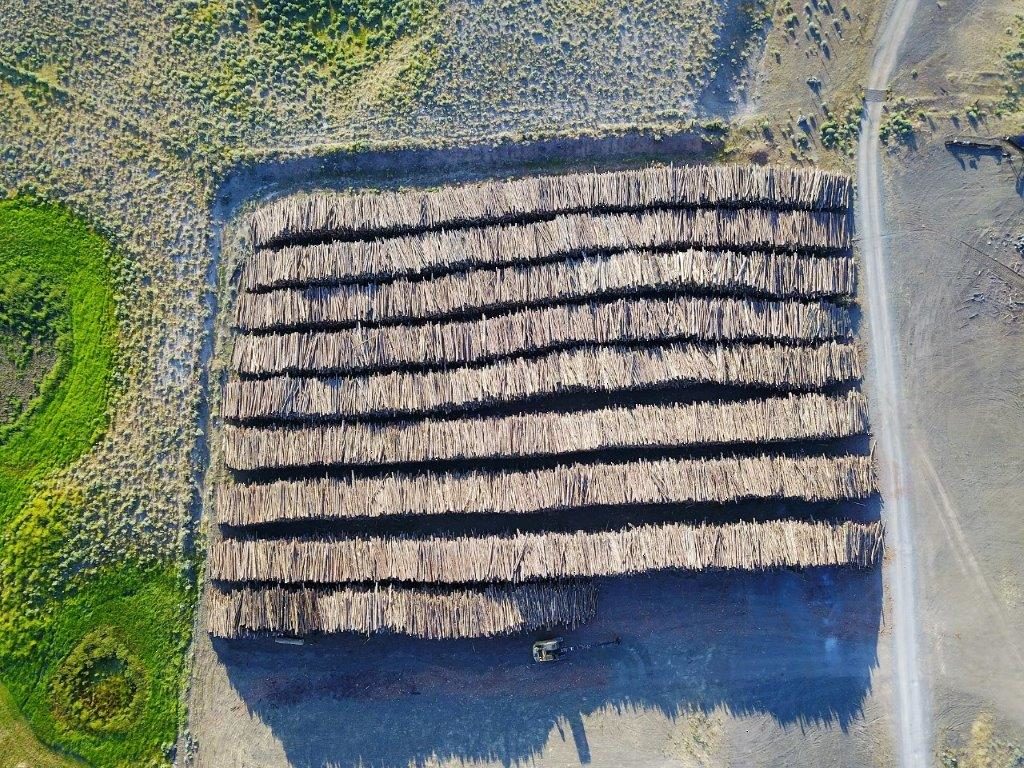
You would be excused for thinking that these developments are no big deal. And it’s true, they aren’t huge operations, but they are game changers.
Forest restoration is expensive and a lack of markets for the byproducts of the work has been its Achilles’ heel. Without markets to offset the cost of conducting treatments, it is nearly impossible to make a significant impact on the landscape.
The U.S. Forest Service doesn’t have enough money to do all the work needed in forests like the Malheur. So these new businesses add important jobs and tax revenue to rural communities that lack both.
The benefits of the mills’ new small-diameter capacity extend beyond the forest to the sprawling rangelands.
The vast expansion of the native Western juniper, a result of fire suppression, has degraded habitat, increased the fire danger and diminished precious water reserves.
The economic dynamic is similar to that of forest restoration: There’s broad support to do the work, but a paucity of funds to get it done.
With Malheur Lumber Company co-locating juniper utilization at its sawmill in John Day, private and public landowners will now have a stable market for juniper removed to improve rangeland health.
Taken together, these developments open a new chapter in the quest to build an economy that can restore healthy forests.
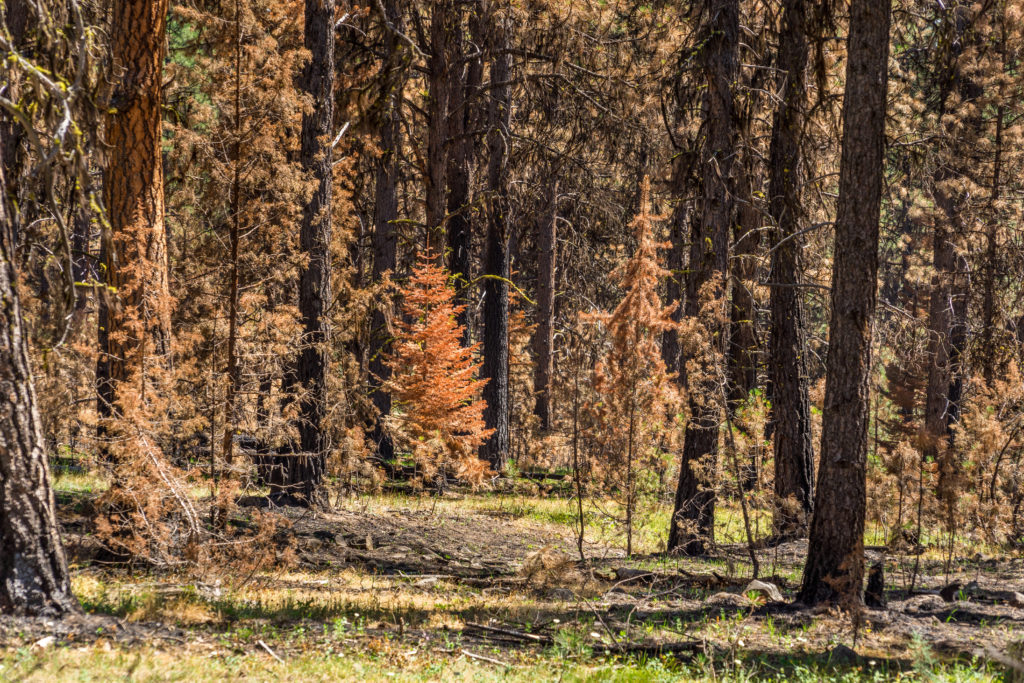
A fire-evolved forest
The Canyon Creek fire stands as a stark and urgent reminder of the need to make forests in the Interior West more resilient to fire, and better to withstand insect attacks and a changing climate.
The Malheur National Forest evolved with fire. Before fire suppression, wildfires burned every 10 to 12 years; an average of 100,000 acres burned annually.
However, the fire behavior was very different then, with much lower intensity and less severe effects.
For years, the Forest Service has made a significant effort to restore the Malheur Forest. That restoration relies on a mixture of timber sales and a 10-year stewardship contract (a stewardship contract allows the agency to use the value of commercial material, e.g. sawlogs, to pay for needed work, e.g. prescribed burning) to improve the overall resilience of the forest.
In the Malheur, the program is treating large blocks — upwards of 25,000 acres – to provide a steady supply of small-diameter wood for local businesses, a certainty essential for businesses that must borrow capital to invest in equipment and employees.
It appears to be working.
“When I drove through the first project area of the 10-year stewardship, I felt – really, for the first time – true and meaningful large-scale change on the forest,” said Dave Hannibal, base camp manager for Grayback Forestry. “A fire could burn in there, and it wouldn’t be a very big deal. It might do a little bit of damage here and there. We made a difference on a large scale, which is pretty cool.”
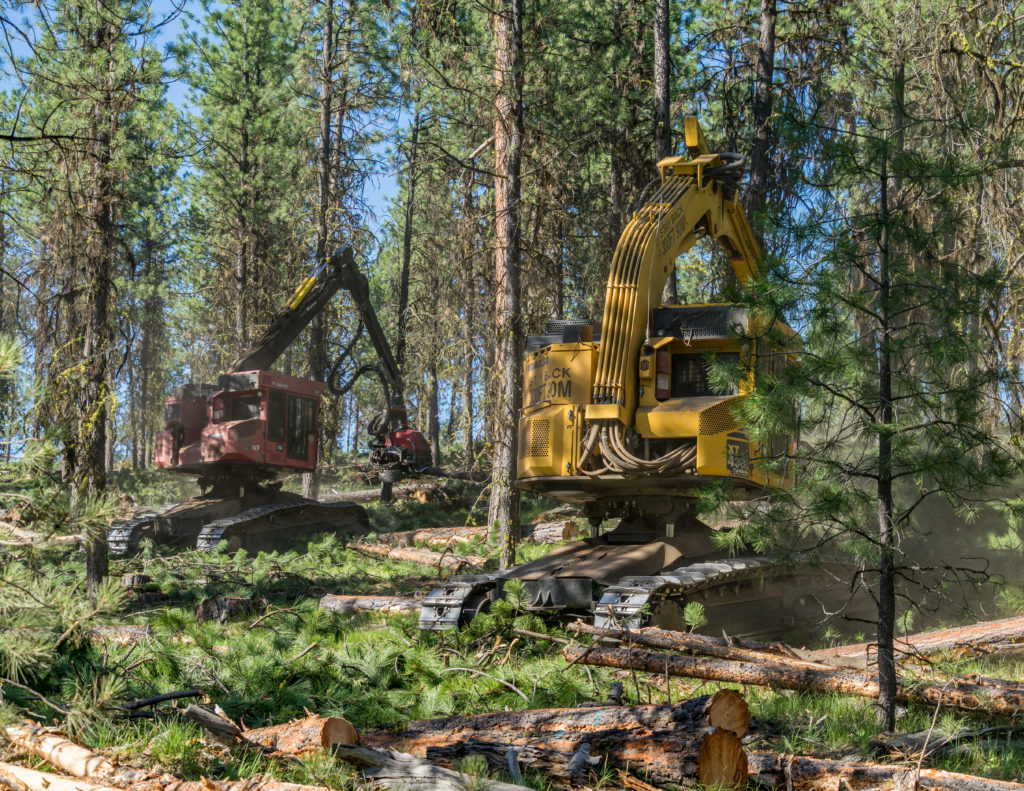
Need for local infrastructure
While the national forest and its collaborative partners have been successful at increasing the pace and scale of restoration treatments, efforts to build right-sized local infrastructure have lagged behind — until now.
“There’s just not enough money to do the job at the scale that’s necessary. You have to develop the partnerships that allow local infrastructure to have a glimmer of some economic return and sustainability over the long run, to be able to even approach the catastrophic fire issue, to even make a dent,” said Steve Beverlin, supervisor of the Malheur National Forest.
Problem is, up until now, nobody could make a profit on the small-diameter trees slated for removal. The county’s last remaining lumber mill, Malheur Lumber in John Day, couldn’t take any material smaller than eight inches in diameter.
Iron Triangle Logging, the company to whom the Malheur Forest awarded the 10-year stewardship contract, had managed to find outlets for the material, but it has always been at a loss.

New investments, changing dynamics
Now, the dynamic is changing. Three new developments show how the restoration economy is taking shape in Oregon and elsewhere to confront the challenge of restoring America’s forests.
In the tiny ranching burg of Seneca, Iron Triangle has been decking small-diameter logs removed from the Malheur Forest for two months now.
Across from a rusty wigwam burner that stands as a mute reminder of the community’s wood products history sits a new symbol: an enormous deck – 15,000 tons – of small-diameter logs removed to make the forest more resilient to fire.
And now Iron Triangle has purchased a used commercial firewood and post and pole mill.
“About half of what we produce is going to be pole material and the other firewood or some other market yet to be determined. Our pole market is the western U.S.: California, Nevada, Utah, Washington, Oregon,” said Zach Williams, vice president of King Inc. and a contractor to Iron Triangle Logging.
Removing the small trees lowers the fuel load so fires burn cooler and are easier to suppress. Officials with the Malheur National Forest require that the small trees be removed, even if they have no value.
“Finding a use for the small stuff has always been the key to actually making restoration work because the mill doesn’t want anything smaller than an eight-inch top,” Williams said. “The stewardship contract includes 50 million feet a year and 40 percent to 50 percent of that material can fall into a category of something that a sawmill doesn’t want.”
The new facility will operate with eight to 10 employees in Seneca and another half-dozen in John Day. The community of Seneca warmly welcomed Iron Triangle’s expansion into small-diameter manufacturing.
“It’s important to the town. The community is excited to see something new and different happening,” said Williams.
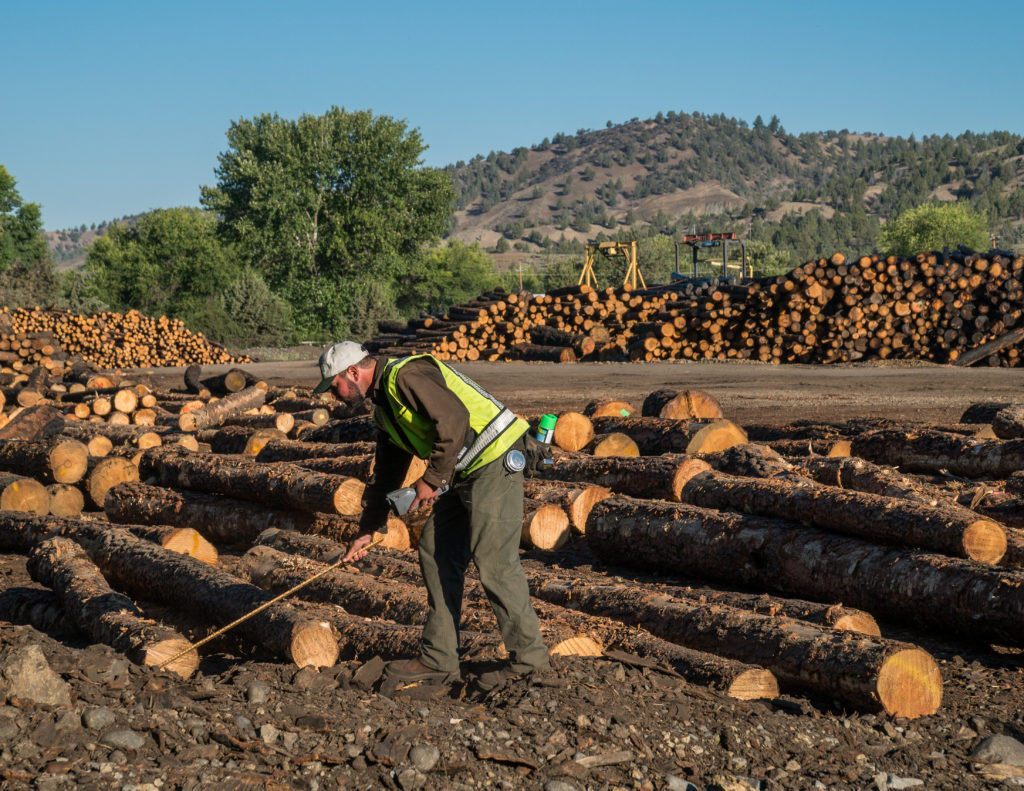
Right-size my sawmill
In a similar vein, Malheur Lumber Company — owned by Ochoco Lumber — is installing a $2.5 million refurbished small-diameter log processing facility at their plant in John Day.
Previously, the mill could not produce boards out of logs smaller than 12 inches. The facility could take smaller logs to produce wood shavings, pulp chips, pellets and wood bricks. But until now, it could not efficiently process the small logs produced by forest health treatments on the Malheur Forest into dimensional lumber.
“The challenges we face is the size of logs we receive from stewardship contracts, historically, has not been a good match for our sawmill,” said Bruce Daucsavage, president of Ochoco Lumber. “The No. 1 problem with sawmills like ours is the head rig, it slows everything down because it’s volume-based and it’s just not set up to efficiently handle lots of small material,” said Daucsavage.
The relatively modest $2.5 million investment will add three to five new employees to the 100-person workforce. It will raise total production to 42 million board feet. The company aims to produce a mix of appearance grade two by material in several thicknesses.

Risky business
“What color do you want us to paint it? I go, ‘Oh, paint it red, man.’ We’re going to be losing our shirts, might as well be red,” said Daucsavage, recalling a conversation about the color of the new small-diameter sawmill at Malheur Lumber.
Daucsavage’s offhand comment underscores the risk and uncertainty that accompanies small-diameter manufacturing. He hopes his company’s reputation will add some value to the product.
“We have to figure out how we can handle small material and do better than the market,” said Daucsavage. “Some of the reasons we do better is the name. The company’s been around for 90 years; it seems to carry some value.”
In most places, lack of a predictable sustainable supply of raw materials hinders businesses from making new investments. That is not the case in John Day, at least not for small-diameter logs. The forest has a 10-year stewardship contract in place, and strong collaborative relationships have helped avoid show-stopping litigation. With a stable supply in place, the entrepreneurs can focus on the business aspects of their ventures instead of worrying about where to get logs.
The supply of juniper, however, is less developed. Oregon’s efforts to create markets for juniper began in earnest when the state Legislature appropriated $1,150,000 to support juniper utilization in 2015.
Since then, the Western Juniper Alliance has actively supported the expansion of juniper-based businesses.
At Sustainable Northwest, policy director Dylan Kruse sees Malheur Lumber’s new small-diameter millworks as “a massive step forward in the evolution of the industry.”
He believes it “will demonstrate the scale at which it can sustainably function.”
Juniper, Kruse said, “is an important new resource that will support holistic restoration on both public and private land.”
“This mill creates and supports jobs in a rural community by capturing value from a resource that not long ago was deemed worthless,” he said. “It’s a true triple-bottom-line operation that everyone can get behind.”
Still, Daucasavage worries that “finding the right log at the right price” might be hard.
“We know we can make it on the right log, but I’m concerned about the quality of the wood coming in and the cost. Juniper is the most expensive logs we have in our deck,” he said.
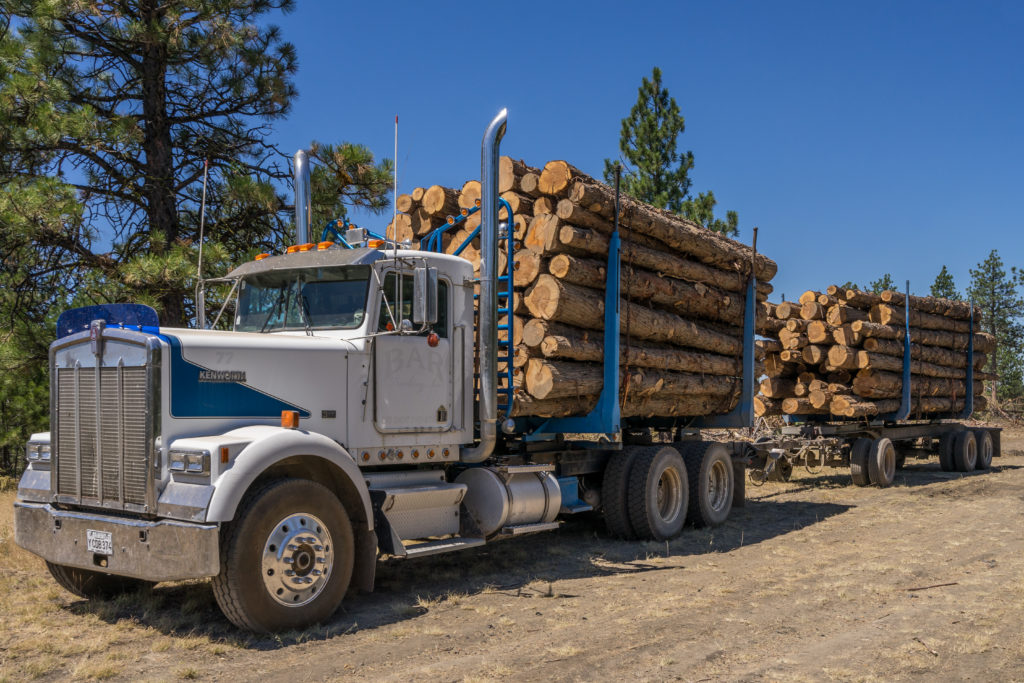
Supply uncertainty presents risks and raises the specter of a mill that can’t get enough logs to make it pay.
Ochoco’s John Shelk did the math: “My calculations are as follows: 5 trucks per day at 20 tons per truck equals 100 tons per day of green juniper logs. Multiply that by 5 days per week and 50 weeks per year equals, I believe, 25,000 green tons of logs per year. That is what I think our mill will need, at a minimum. We are currently way short of that number of consistent deliveries.”
“The biggest challenge is the fixed asset portion of this tying up capital, if you run out of logs or you can’t find the logs,” Daucsavage added. “Our facility, although it’s set up to take juniper initially, is really set up for, and most of it will be used for, the pine. So we don’t have capital tied up in equipment that isn’t producing something.”
The flexibility to use either species reduces the risk, he said.
In rural eastern Oregon, communities made a choice: They’re reducing the wildfire risk by creating a forest resilient to fire, insects and climate change.
They are intervening with a combination of timber harvests and planned fires to change the potentially disastrous dynamic of a homogeneous forest landscape, dense with relatively small trees.
Here, communities chose not to roll the dice and watch the next Canyon Creek wildfire decide their future.
The collaborative partnerships between the Malheur National Forest, environmental/conservation groups and private businesses around John Day seem to be threading the needle of forest restoration, environmental health and economic viability.

EXCELLENT!!
BOB WILLIAMS CF